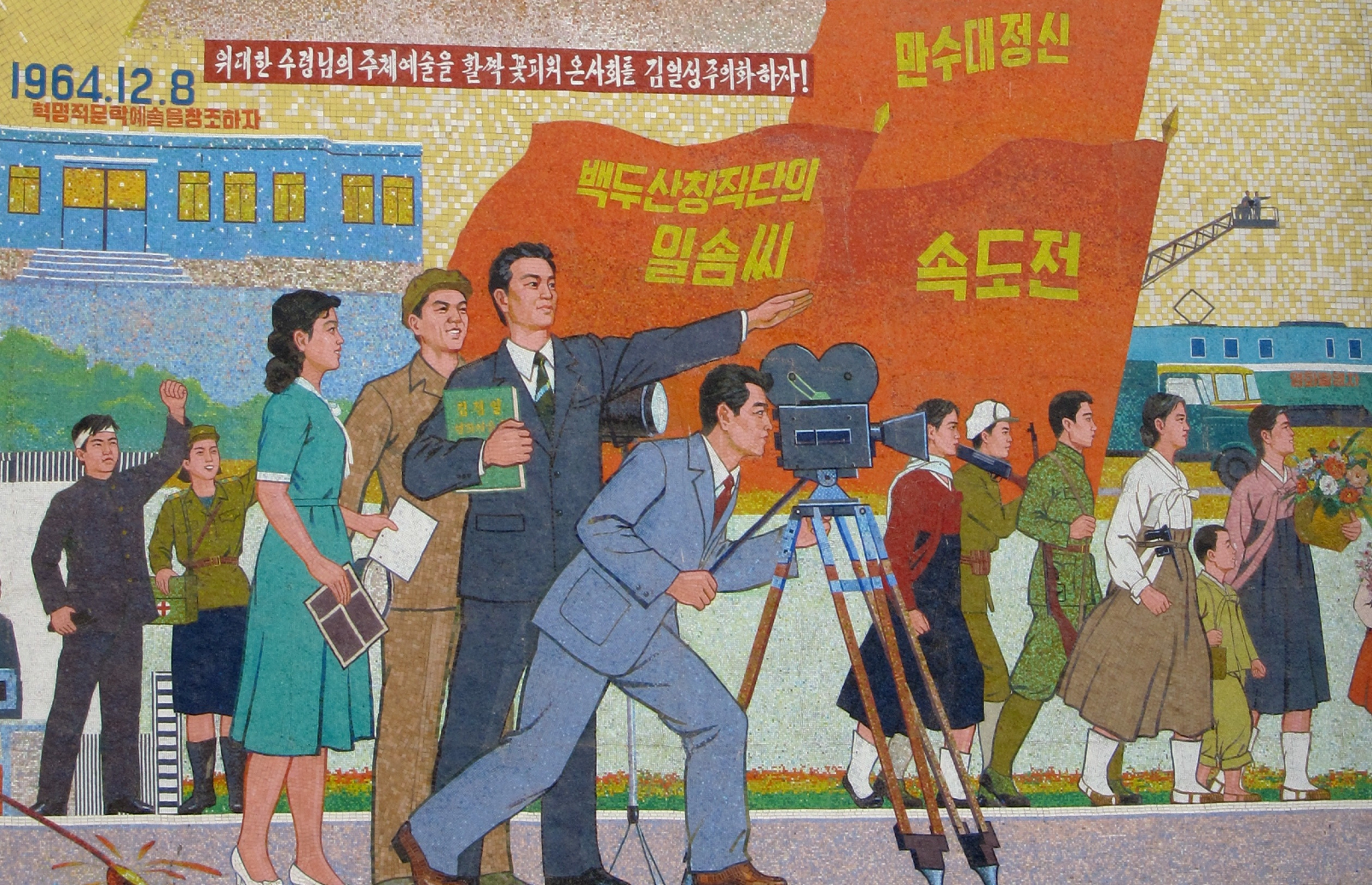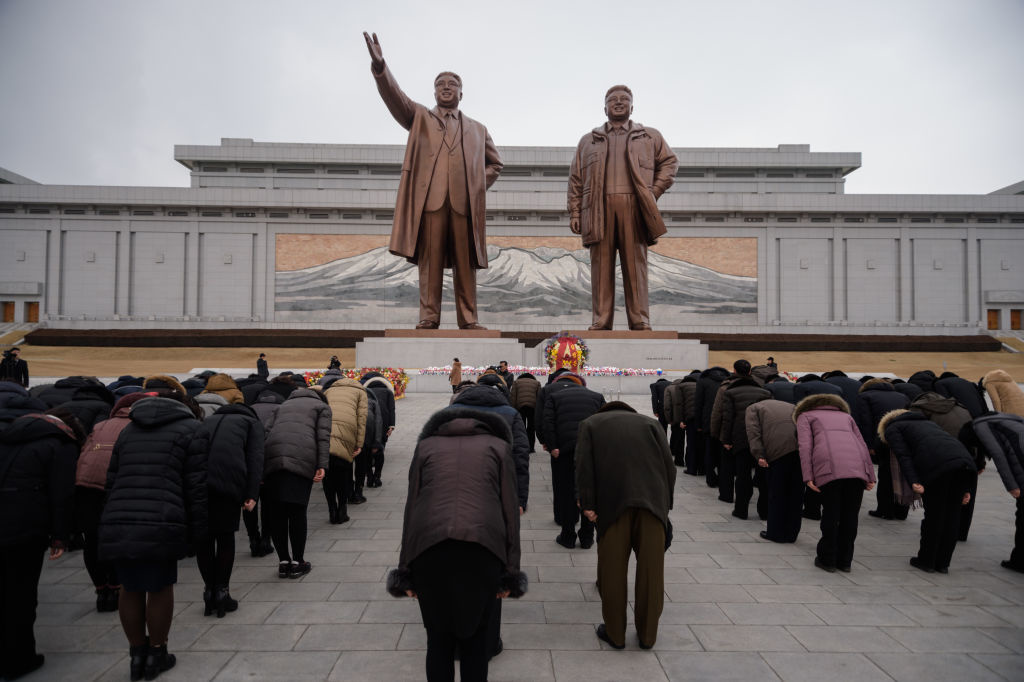North Korea wanted better propaganda movies, so it abducted foreign directors

- Despite their differences, North and South Korean cinema share a common origin.
- Following the Korean War, Soviet occupants helped North Korea transform its movie industry into a propaganda machine.
- Dictator-director Kim Jong-il attempted to elevate North Korean cinema to the status of art, but realized the two are not easily reconciled.
When Bong Joon-ho’s Parasite received an Oscar for Best Picture in 2020, western audiences showed unprecedented interest in South Korean cinema. This interest was well deserved, as the country has one of the most prolific film industries in the entire world. South Korea has been making revolutionary motion pictures since the 1960s, and to this day the medium plays an important role in defining as well as expressing the country’s national identity.
The same is true for neighboring North Korea — only there, cinema has served as a mouthpiece for the ruling Kim dynasty. Under guidance of his Soviet allies, Kim Il-sung turned North Korea’s film industry into a propaganda machine. His cinephile son, Kim Jong-il, kidnapped foreign directors in an attempt to make his movies more artistic. His own son, Kim Jong-un, is now producing family sitcoms about the creation and testing of ballistic missiles.
In spite of their stark differences, North and South Korea share the same origin. In 1898, the British-American Tobacco Company showed short films around Seoul to sell cigarettes; the admissions fee: an empty cigarette pack. The first Korean cinemas showed mostly American movies. Following the country’s colonization by and annexation to the Empire of Japan in 1910, this assortment was quickly replaced by Japanese productions.
In the next two decades, a distinctly Korean film industry emerged. It showed socialist (and arguably communist) tendencies. The Korean Film Arts rebranded itself into Seoul Kino, a nod to the Bolshevik documentarian Dziga Vertov and his Kino-eye philosophy. The film Hongga (“Dark Street,” 1929) depicts urban class struggle, while Chiha ch’on (“Underground Village,” 1930) shows how the Manchurian War against Japan affected ordinary Korean workers.
Due to political opposition and lack of interest from the public, these movies vanished as soon as they had appeared. After Korea’s liberation from Japan, its directors traveled north, where, to quote Korean historian Charles Armstrong, “the Soviet occupation and communist dominated government allowed for — indeed demanded — precisely the kind of ‘proletarian’ films these artists had struggled to produce in the colonial period.”
North Korean cinema under Kim Il-sung
Of the various communist factions that vied for control over North Korea, Kim Il-sung’s was relatively uninvolved in cultural affairs — at least initially. During the period that Kim came to power, North Korean cinema was organized by his Soviet allies. Lenin and Stalin saw film as the single most effective tool for spreading propaganda; being a predominantly visual medium, movies could spread ideas to illiterate parts of the population, and their production was an inherently collective enterprise.
Following in the footsteps of the USSR, the Peasant League Central Committee of North Korea started sending out mobile film groups into the countryside as early as 1949. Peasants there were shown Russian newsreels, giving them a false impression of what life under a communist regime could look like. Just as in Russia, the North Korean government reserved the right to determine what kind of subjects were permissible and which were not; capitalism and crime were thought to corrupt audiences, so depictions of them were banned.
Before long, North Korean cinema diverged from its Soviet counterpart. It did so, as Armstrong explains, “by creating a distinctive cinema rooted in melodramatic emotionalism, a sentimental attachment to the Korean countryside and the alleged values of peasant life, and a nationalist politics centered around the person of Kim Il-sung.” Whereas Soviet cinema had a decidedly global outlook, North Korean cinema turned unequivocally chauvinist.
The film Nae kohyang (“My Hometown”) set artistic and ideological parameters that North Korean filmmaking would follow for decades to come. Released in 1949 — three years after the South Korean production Viva Freedom! — the film broke with the conventions of Soviet cinema. Its focus was not class warfare, but the campaign against Japanese oppression. “Its propaganda message,” concludes Armstrong, “is one of Kim Il-sung (…) not the Soviet Army.”
Over time, Kim Il-sung became more involved in North Korea’s cultural production. In 1966, the leader reminded his people that “art should develop in a revolutionary way, reflecting the Socialist content with the national form.” A novel Kim wrote while fighting the Japanese was adapted into the film Fate of a Self-Defense Corps Member, and an opera attributed to him — Sea of Blood — became the basis for a highly regarded 1969 film of the same name.
North Korean cinema under Kim Jong-il
Although it was illegal for ordinary North Koreans to watch foreign films, that rule didn’t apply to Kim Jong-il. In his youth, the son and eventual successor of Kim Il-sung collected more than 15,000 films, with Hollywood staples like James Bond and Rambo ranking as some of his favorites. Inspired by his father’s 1966 call for the importance of state ideology (“Juche”) in art, Kim Jong-il authored a book on North Korean film theory and decided to try his hand at directing.
The title of his book, On Art and the Cinema, was emblematic of the kind of problems that the dictator-director encountered during his filmmaking career. Unlike his father, Kim Jong-il not only treated cinema as propaganda, but also as an artform. He succumbed to frustration when he realized the two were not easily reconcilable. Compared to his favorite blockbusters, North Korean films appeared technically inadequate and lifeless.
To address this issue, Kim Jong-il authorized the kidnapping of South Korean actress Choi Eun-hee, followed by her ex-husband, the prolific filmmaker Shin Sang-ok. Shin was guaranteed his safety and given an office at the Choson Film Studios in Pyongyang under the condition he help Kim Jong-il produce a movie that could enter (and stand a decent chance at winning) an international competition or film festival.
Along with Choi, Shin was instructed to critique four movies per day, all taken from Kim Il-sung’s own library. They mostly watched movies from communist countries, along with the occasional western picture mixed in for good measure. Fully aware that a purely propagandistic film would not be well received by international juries, Kim Jong-il gave Shin permission to push the ideological boundaries of his productions ever so slightly, redefining what North Korean cinema could look like.
In all, Shin spent eight years in North Korea and directed up to seven features before he managed to escape his captors. Shin’s films, like most North Korean media, are extremely difficult to get your hands on. Much of what we know about them comes from film historian Johannes Schönherr, who attended the 2000 Pyongyang International Film Festival and wrote a detailed correspondence of Shin’s work for Kim Jong-il.
The North Korean films of Shin Sang-ok
“As shrouded in mystery as [Shin’s] stay in the North is,” Schönherr writes in an article on Shin’s career as an abductee, “his films are testimony that he did some of his best work there. In addition, comparing his Northern productions with the general development of North Korean cinema shows that he introduced many new concepts and ideas to the Northern cinema and that he successfully challenged many restrictions.”
One of the first movies that Shin directed was called Doraoji annun milsa (“An Emissary of No Return,” 1984). Based on Kim Il-sung’s play Bloody Conference, it follows Ri-jun, a Korean emissary who travels to the 1907 International Peace Conference at the Hague to ask the rest of the world to help free Korea from Japanese control. When Ri-jun’s speech falls in deaf ears, he proceeds to commit ritual suicide in front of the other diplomats.
Doraoji annun milsa was revolutionary for several reasons. It was the first film in North Korea’s history to be partially shot in a foreign country — specifically, Czechoslovakia. It was also the first to star non-Korean extras. Prior to this film, every western character had been portrayed by a blond-dyed Korean actor. As Schönherr states in his review, it should come as no surprise that Shin chose a European setting and chose a story which is also known to South Koreans.
Virtually every North Korean film Shin directed broke new grounds. Sarang sarang nae sarang (“Love, Love, My Love,” 1984), a love story based on a Korean folktale, featured the country’s first, albeit veiled, kiss between actors. Sogum (“Salt,” 1985) depicts a woman’s conversion to communism as a natural and emphatic response to tragic life events rather than the result of indoctrination. Choi starred in the lead and won an award at the Moscow Film Festival.
Shin’s most famous movie was the 1985 monster movie Pulgasari. Inspired by the success of Godzilla, it tells the story of a little girl who accidentally transforms her toy dragon into a kaiju-like monster that then leads a peasant uprising against a corrupt emperor. When the peasants lose control over the monster, the girl sacrifices herself to destroy it — a conventional but nonetheless original take on the familiar theme of putting your country before your own wellbeing.
North Korean cinema under Kim Jong-un
Kim Jong-un did not inherit his father’s passion for foreign cinema, but his departure from Kim Jong-il’s methods can be explained by changes in the global media landscape as much as a difference in cinematic taste. Where his father was obsessed with the feature film, Kim Jong-un’s regime sees more potential in the format of television dramas. According to the foreign correspondent Jean Lee, North Korean propaganda is now being propagated mainly through sitcoms.
TV, Lee writes in an article published by the Korea Economic Institute of America, acts as “advertisement for the ‘good life’ promised to the political elite. Through TV dramas, the North Korean people learn what the regime says constitutes being a good citizen (…): showing loyalty to the party, using science and technology to advance national interests, thinking creatively in problem-solving, and facing the nation’s continued economic hardships.”
Compared to Shin’s movies, these sitcoms aren’t exactly subtle in their messaging. The 2013 television drama Young Researchers follows four Pyongyang middle schoolers as they compete for the top prize in a science fair: a rocket launcher. The two-part slapstick sitcom Our Neighbors was an advertisement for the luxurious lifestyle that party loyalists could attain when they earn their admission to the capital’s most prestigious neighborhood.
Look closer, however, and you will find that these programs are full of little details showing how North Korean society is changing under the current leadership. The everyday storylines of Our Neighbors are a sharp departure from Kim Jong-il’s political dramas. Elsewhere in the show, living room portraits of the country’s leaders have been replaced by family photos. “A possible allusion to the issue of defection,” writes Lee, stating the regime is known for using filial piety to prevent dissent.
Although there is more to North Korean cinema than meets the eye, its movies are ultimately little more than a mouthpiece for the Kim dynasty and its political aspirations. Still, closer inspection of North Korean cinema can show us how the country is developing, not to mention where its leaders plan on taking it in the future. Considering how closed-off North Korea is, their entertainment — however propagandistic — often turns out to be our only way inside.





